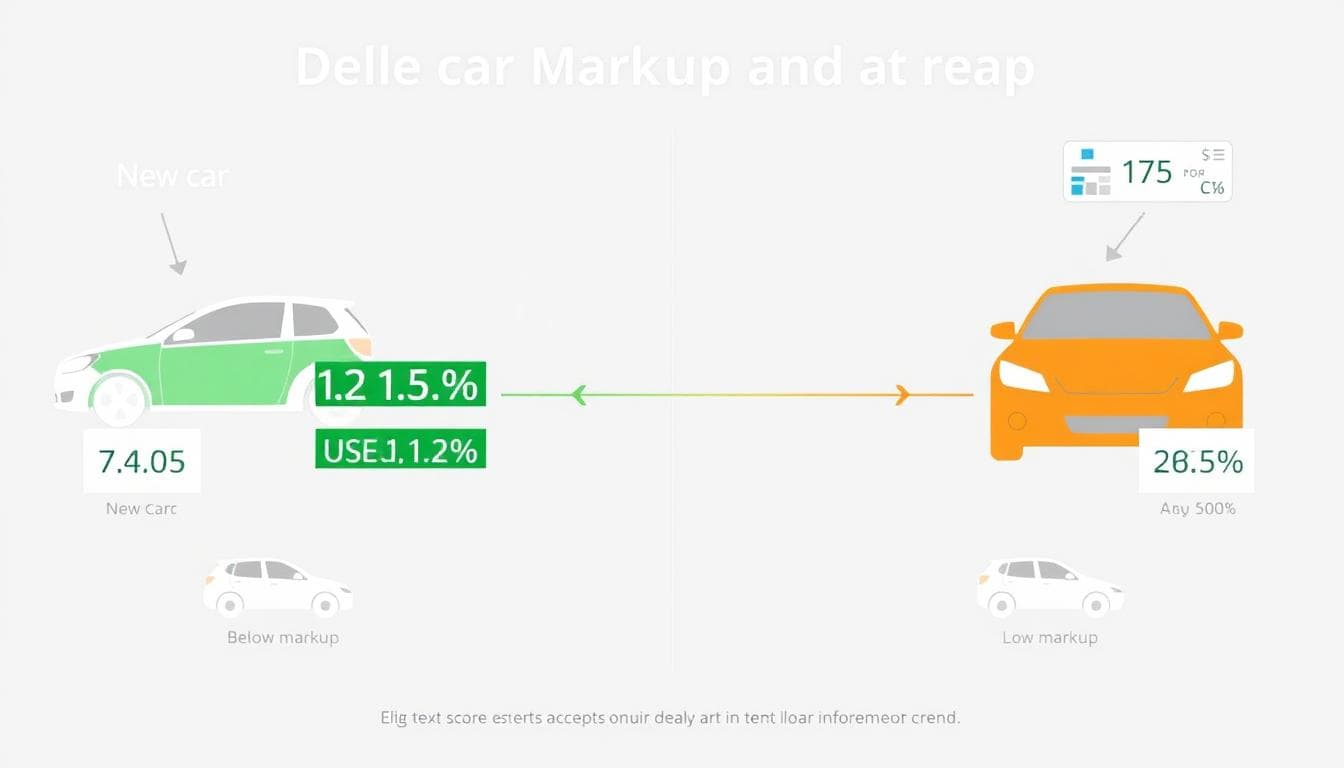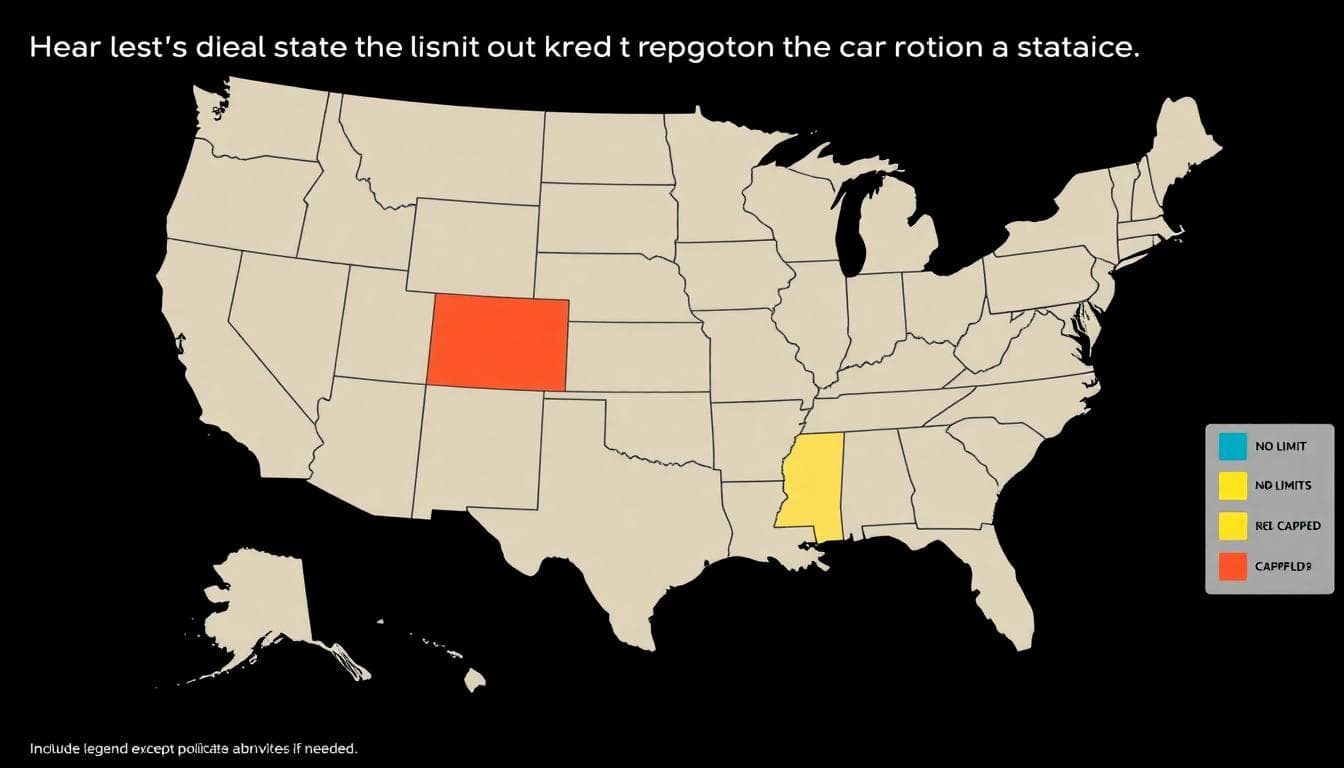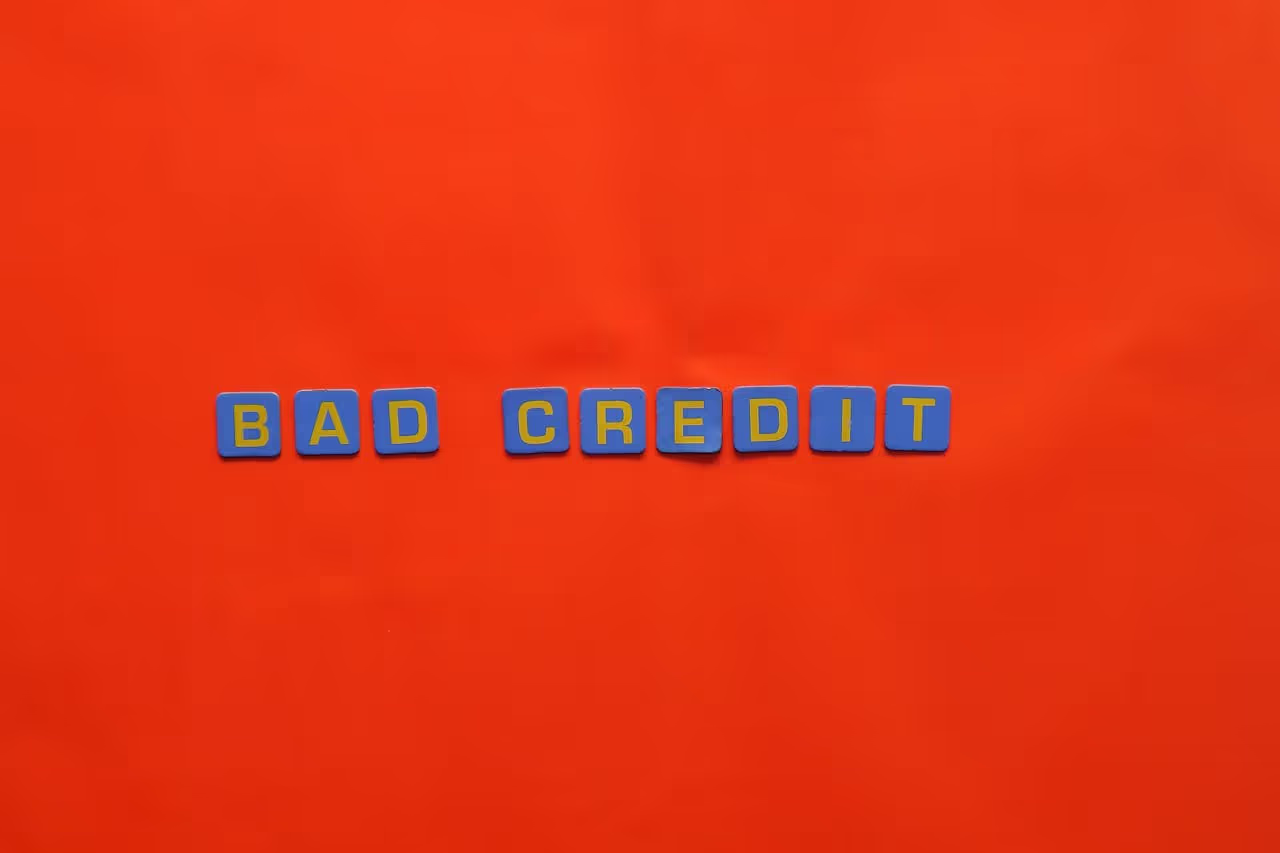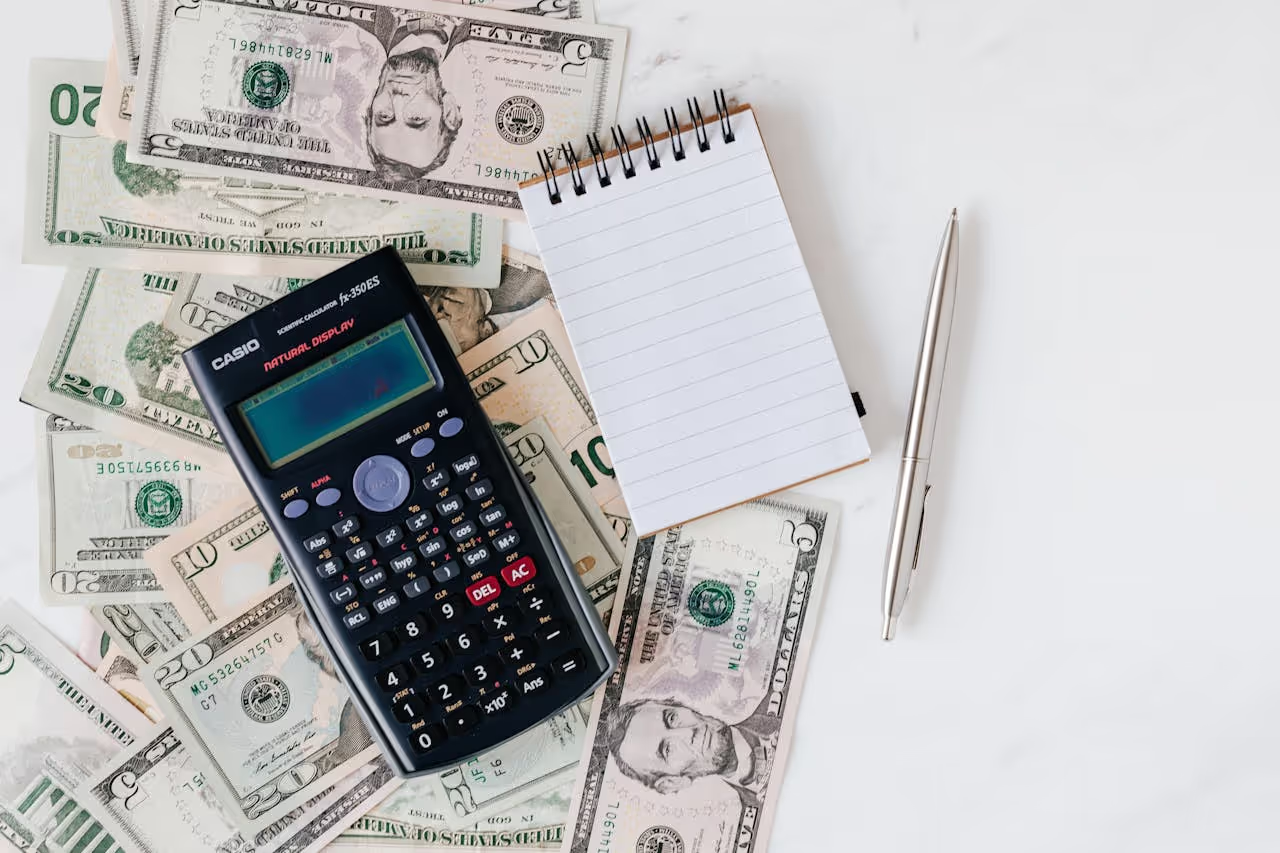Dealer Markup on Auto Loans: How Much Extra APR You Pay (2025 Guide)
What Is Dealer Markup on Auto Loans?
 Image created with AI
Image created with AI
Dealer Markup on Auto Loans is the extra interest a dealership adds to the rate offered by a lender during the financing process. You get quoted a final rate that includes this add-on. Lenders set a buy interest rate based on your credit profile. The dealer can then increase that rate, and the difference becomes profit for the dealership. APR
This practice is common, and it changes what you pay every month. A small bump in rate can cost hundreds or thousands over the life of the loan. You do not see a line item for it. You only see a higher contract rate.Manufacturer Financing vs Dealer Financing
How Dealer Markup Works AND Manufacturer Financing vs Dealer Financing
Buy rate: The lender’s approved interest rate for your loan.
Dealer loan markup: The added percentage the dealer places on top of the buy rate.
Contract rate: The rate you sign for, which equals buy rate plus markup.
Here is a simple flow:
Lender approves a 5.49% buy rate.
Dealer adds 1.50% dealer loan markup.
You sign at 6.99% APR.
Dealers often receive a payment from the lender that tracks the markup. This is sometimes called participation. According to consumer research, add-ons of 1 to 2 percentage points are common rates, which can raise total cost by a lot over time. For a helpful overview, see the Outside Financial Markup Index. Longer loan terms and larger loan amounts magnify the impact.
Why Dealers Mark Up Interest
Dealers make money in the finance office. Marking up the rate is one of several profit centers, along with products like service contracts and GAP. Markup varies by dealership, lender program, and your credit tier. Some lenders also cap markup. A Consumer Federation report found markups of several percentage points in many cases, with most of the markup paid back to the dealer by the lender. You can read the report here: The Hidden Markup of Auto Loans.
Buy Rate vs. Contract Rate: What You See vs. What You Pay
The buy rate is between the dealer and the lender. The contract rate is what hits your agreement. If you only focus on the payment, you may miss that spread. Always compare contract rates from outside lenders to spot markup.
Example:
Bank pre-approval: 5.49% contract rate, 60 months
Dealer quote: 6.99% contract rate, 60 months
The 1.50% difference is likely dealer markup.
Example: The Real Cost of a Small Markup
A small change in contract rate can drive a big change in total paid. The table below shows a typical case.
Loan AmountTermBuy RateMarkupFinal RateEst. Monthly PaymentEst. Total Interest$30,00060 months5.49%0%5.49%~$573~$4,380$30,00060 months5.49%+1.50%6.99%~$593~$5,580
Difference: About $20 more per month, around $1,200 more in interest.
Takeaway: A 1 to 2 point bump can cost a used car’s worth of add-ons over time.
These are estimates, but they show why even a small dealer loan markup matters.
When Markup Usually Happens
At the dealership F&I office: After price is set, during paperwork.
When you do not have pre-approval: The dealer controls your reference point.
With long terms: More months means more time for interest to add up.
With used vehicles: Base rates tend to be higher, so markups hurt more.
What It Is Not
It is not the MSRP markup on the vehicle price. That is a separate topic covered by pricing. For rate markup, focus on the contract rate in the finance agreement, not the sticker.
How Much Do Dealers Mark Up Interest?
There is no single number. Programs vary.
Many deals see 1 to 2 percentage points added to the buy rate.
Some lenders cap markup. Others pay flat fees on certain tiers.
Your credit score, loan term, and vehicle type all affect what the dealer can add.
If you are wondering how much dealers mark up interest in your case, compare your dealer’s contract rate to a credit union or bank quote on the same day. The gap is the likely markup.
Quick Terms to Know
TermMeaningBuy rateLender’s approved rate before any dealer add-onDealer markupThe increase the dealer adds to your rateContract rateThe rate you sign for in the agreementParticipationCompensation the lender pays to the dealer tied to markupFlat feeA fixed dollar payout to the dealer instead of a rate add-on.Manufacturer Financing vs Dealer Financing
Bottom Line
Dealer Markup on Auto Loans is the spread between the lender’s buy rate and your contract rate. It is profit for the dealer and cost to you. Even a 1 point increase can raise your payment and total interest in a big way. Bring a pre-approval, compare contract rates, and do not anchor on the monthly payment alone.
Average Dealer Markup Percentages and Hidden Costs
 Image created with AI
Image created with AI
Dealer Markup on Car Loans is not a line on your contract; it is buried in the interest rate. The lender sets the buy rate, then the dealer adds a spread called dealer loan markup through dealership financing. On new cars, the add-on often sits in the 0.5 to 1.5 percentage point range, especially with manufacturer financing options from captive lenders that can include manufacturer specials. On used cars, 1 to 3 percentage points is common due to higher base rates and perceived risk. Separate from financing overall, many dealers also aim for higher gross profit on used vehicle prices, which can push total cost far more than the rate alone—factors like a solid down payment can help offset some of that impact.
Recent market data shows used car rates trend higher than new, so any markup compounds the cost. For context, industry trackers report higher average rates on used loans compared with new loans, which makes the spread more painful for buyers with weaker credit. You can see current averages by credit tier in reports from Bankrate on 2025 auto loan rates and NerdWallet’s rate overview.
Here is a quick view of typical ranges and where hidden costs creep in.
Vehicle typeTypical dealer loan markup on ratePrice markup potentialWhere hidden costs hitNew car~0.5% to 1.5%Lower than used, tighter marginsRate markup, add-on productsUsed car~1% to 3%Often higher gross, sometimes 10% to 25%Rate markup, add-ons, recon fees baked into price
Key insight: A 2-point markup on a used car with an already high rate can cost far more than the same spread on a new car, particularly when considering financing options like 0% APR promotions where markup is less likely but other terms may be restrictive.
Another factor: Longer terms amplify the dollar impact of any markup.
Why Markups Vary by Loan Type and Credit Score
Loan programs price risk. New car loans carry lower risk for lenders, so the buy rate starts lower, often supported by manufacturer financing from captive lenders. Used car loans start higher due to age, mileage, and collateral risk, with in-house financing sometimes used for riskier structures. Dealers then add to that rate, and the spread often widens on used.
Your credit score drives the gap between buy rate and what you pay. If your score is strong, your contract rate tends to sit close to the buy rate. If your score is weak, dealers often add more, citing risk and approval friction. That is how much dealers mark up interest in practice: the same buyer profile can see very different rates depending on the store, lender, and credit tier.
What this looks like in real terms:
Excellent credit (750+): Small spread, often 0.5 to 1.0 points, especially on new. You are close to the buy rate.
Good to fair credit (660 to 749): Moderate spread, often 1 to 2 points. Bigger on used since base rates are higher.
Subprime (below 660): Large spread, often 2 to 3 points on used. Dealers justify it as risk and lender conditions.
Current market rates reflect this pattern, with new loans pricing lower than used across credit tiers, which means dealer loan markup takes a bigger bite on used. To see how base rates differ by score and vehicle type, check the latest breakdowns in Bankrate’s credit-score tables and Cox Automotive rate tracking cited by NerdWallet. Manufacturer Financing vs Dealer Financing
Practical examples:
A new car buy rate at 5.5% with a 1.0 point markup lands at 6.5%.
A used car buy rate at 9.5% with a 2.0 point markup lands at 11.5%.
The same 1 to 2 point spread adds far more dollars of interest on the used deal, especially when comparing new versus used car loans.
Hidden costs that often ride along with markups:
Rate reserve: The spread between buy rate and your rate.
Bundled add-ons: Service contracts, GAP, tire and wheel, and other products financed into the loan.
Documentation and “nitro/VIN etch” packages: Small items that add up when financed.
Recon baked into price: Reconditioning and lot fees folded into a used car’s asking price.
Want to lower the markup before you even step on the lot? Improve your score and bring your own benchmark:
Check your reports: Pull all three reports and fix errors. Even one late payment misreport can raise your rate.
Pay down revolving balances: Keep utilization below 30 percent, under 10 percent is better for scoring.
Avoid new credit: No new cards or loans for 60 to 90 days before shopping.
Time your payments: Make sure statements cut with low balances reported.
Get a prequalification: A credit union quote pins down a real rate, which shrinks the room for markup.
Shorten the term: Shorter loans often qualify for lower buy rates, so any markup costs less over time.
Two strong negotiation moves:
Ask the finance manager to “match your pre-approval rate” or to show the buy rate. Even if they will not show it, the request signals you know how Dealer Markup on Car Loans works.
Decline non-essential add-ons first, then revisit the rate. Stripping profit centers can make the rate discussion simpler.
Bottom line: New vs. used and your credit score set the stage. Markups grow where base rates and perceived risk are higher. Tighten your credit profile, secure a pre-approval, and compare offers side by side to keep the spread small.
State-by-State Limits on Dealer Markup for Car Loans
Not all states treat dealer finance profit the same way. Some focus on disclosure and fee caps. Others rely on general usury laws that cap total APR. Very few states publish a hard cap on dealer participation itself. That means your protection often comes through broader rules, not a simple, universal limit on markup. Knowing the difference helps you spot red flags and keep more money in your pocket.
 Image created with AI
Image created with AI
How States Actually Regulate Markup
States rarely set a single number for dealer loan markup. Instead, they regulate the broader financing package in three main ways, influencing your overall financing experience:
Usury and rate caps: State usury laws limit total interest a lender can charge, including the interest rate on your loan. Dealers and auto finance companies may face different rules depending on licensing status. For a clear explainer of how interest caps work in practice, see this overview on dealer interest rate limits and usury laws.
Disclosure and unfair practices: Many states require clear disclosures of finance terms and ban deceptive or unfair practices. That includes hiding the real APR or packing add-ons into the loan without consent, ensuring transparency in loan terms.
Fee caps and admin charges: Some states cap dealer document fees, which are often added to the amount financed. While not the same as rate markup, fee caps affect total cost. For a current reference, check this breakdown of dealer doc fees by state.
Bottom line, most limits you feel at signing come from total APR caps, disclosure rules, and fee limits. The specific “dealer reserve” add-on is rarely capped by a single statewide number.
What Is Capped, What Is Not
Think of the deal in layers. When you see where each layer is regulated, you can spot where costs hide.
Often capped or controlled
- Total APR via usury laws or licensing rules
- Document fees and admin fees in certain states
- Required disclosures for APR, term, and add-ons
Total APR via usury laws or licensing rules
Document fees and admin fees in certain states
Required disclosures for APR, term, and add-ons
Often not directly capped
- The dealer’s participation spread above the lender’s buy rate
- Add-on product pricing, unless a state sets a specific limit
The dealer’s participation spread above the lender’s buy rate
Add-on product pricing, unless a state sets a specific limit
Even when the dealer’s spread is not capped, the total APR still must stay within the state’s legal limit. That is your backstop.
Quick Reference: What Varies by State
Use this at-a-glance table to understand how rules commonly show up across states. It is a guide to the types of rules you might see, not a complete legal list.
Area of regulationHow it affects youUsury or APR capsPuts a ceiling on total rate regardless of dealer markup.Dealer doc fee capsLimits added admin costs that get financed into the loan.Disclosure requirementsForces clarity on APR, terms, and optional products.Unfair or deceptive acts lawsBlocks bait-and-switch or hidden add-ons.Licensing of lenders/retail sellersDetermines which rate rules apply to the dealer or lender.
Tip: A state with strong doc fee caps and strict disclosure can still allow dealer participation. Your total cost control comes from comparing APRs and rejecting extras you do not want.
Examples of State Patterns You Might See
States tend to fall into a few patterns. Here is how that looks when you shop.
Strict fee caps, standard rate rules: You will see a predictable doc fee and clear disclosures. The dealer may still add a rate spread, but it must fit under the total APR ceiling.
Light fee rules, strong usury enforcement: The doc fee may be higher. The real cap comes from usury limits, so the finance office threads the needle by moving rate and extras within that ceiling.
Robust disclosure focus: You get paperwork that calls out APR and optional products. You still need to compare an outside pre-approval to catch dealer loan markup, especially when considering in-house financing from the dealer versus other providers.
Want a sense-check before you sign? Compare the dealer’s APR to a credit union pre-approval on the same day. The gap is often how much dealers mark up interest.
How to Check Your State’s Limits in Minutes
You do not need a law degree to do this. Use a simple plan.
Find your state’s doc fee cap. Use a current guide like CarEdge’s doc fee by state to see what is normal near you.
Confirm rate caps and usury basics. Read a plain-language overview of interest limits, such as this page on dealer interest rate limits and usury laws. Then search your state attorney general site if you need more detail.
Ask the finance manager direct questions. Request the buy rate, the amount of dealer participation, and a line-item price for each add-on. If they will not share buy rate, use your pre-approval to force a real comparison, such as through direct lending to secure a competitive rate.
Keep optional products separate. Decide on GAP, service contracts, or protection plans only after the APR is locked. Bundling can hide the real cost, so evaluate each financing option carefully.
Verify that APR stays under your state’s legal limit. If the number looks high, ask for a written explanation of how it complies.
What This Means for Your 2025 Deal
Dealer Markup on Car Loans, often depends on program rules, not a state-by-state cap on participation. Your control points are simple and powerful.
Bring a pre-approval. It narrows the spread and speeds up the deal, and bank financing can serve as a strong alternative to dealership options.
Lock price first, then rate, then extras. One step at a time cuts confusion.
Watch the doc fee. If your state caps it, hold the dealer to that number.
Decline what you do not want. You can always add a product later with your lender.
Compare the final APR to your benchmark. If the difference is large, ask them to match, and remember to compare offers from multiple sources as a key tactic to spot markup.
If you want extra context on current buying risks and markup tactics, this practical primer from Kelley Blue Book on avoiding dealer markups is a helpful read.
The takeaway: State rules shape the edges, but your best protection is comparison. Use a bank or credit union quote to keep dealer loan markup in check, and confirm that your total APR respects your state’s legal limits.
How to Calculate Dealer Markup on Your Car Loan
 Image created with AI
Image created with AI
You do not need a finance degree to see the cost of dealer loan markup. A simple calculator can show the exact dollars you pay above the lender’s buy rate. Grab your loan amount, term, and two interest rates, then run the numbers side by side. This puts a hard figure on how much dealers mark up interest in your deal. It also gives you a clean printout to bring into the finance office.
Tools and Calculators to Estimate Your Extra Payments
Free calculators make this fast. NerdWallet’s tool gives clear payment and interest totals, ideal for quick comparisons. Try the Auto Loan Calculator from NerdWallet. If you want to factor taxes, fees, or a trade-in, use the flexible Auto Loan Calculator at Calculator.net. Bankrate’s car loan calculator is another solid option, even if you just prefer a second check.
Here is the simple method that works at any dealership:
Gather your numbers: principal (amount financed), term, and your pre-approval APR after submitting a loan application. That pre-approval from your credit union is your buy rate benchmark.
Enter principal, term, and the dealer’s offered APR in the calculator. Record the monthly payment and total amount repaid.
Swap only the APR to your buy rate. Keep principal and term the same. Record the new payment and total interest.
Compare both results. The difference in monthly payment and total interest is the dealer loan markup cost.
Save or print both results. Bring them to the finance office and ask them to match your buy rate payment.
Tip: Use round numbers and keep it apples to apples. Same principal, same term, only change the APR.
A quick example to anchor the process:
Loan amount: $28,000
Term: 60 months
Buy rate: 5.9% APR
Dealer offer: 7.4% APR
What you will likely see:
Payment difference of about $18 to $25 per month.
Extra total interest of around $1,000 to $1,400 over the term.
That gap is the practical cost of Dealer Markup on Car Loans, in your contract. You can also model a shorter term to see how less time reduces the dollar impact of any markup.
When to use each tool:
NerdWallet’s calculator for fast payment and interest snapshots. It is great on a phone while you are at the desk.
Calculator.net if you want to plug in taxes, doc fees, or a trade-in and see the impact in one view.
Edmunds offers an easy slider style layout that helps you test what-if scenarios with rate and term. Try the Edmunds Monthly Car Loan Payment Calculator.
Smart ways to use your results during dealer talks:
Bring two printouts, one at the dealer’s rate and one at your buy rate. Put the payment and total interest on the top line so it is hard to ignore.
Circle the dollar difference and ask the manager to match your buy rate or meet your target payment at that rate.
If they will not show the buy rate, your side-by-side numbers keep the discussion focused on cost, not distractions.
Bottom line, a two-minute calculator run turns a vague APR into exact dollars. That clarity makes it easier to negotiate and to decide if the offer is worth signing.
Real Examples of Dealer Markup Costs in Dollars
Dealer Markup on Car Loans, is the silent bite in your APR. You see a payment that looks fine, but the extra percentage point or two the dealer adds can mean thousands over the term. The examples below translate typical markups into clear dollar amounts so you can spot, and stop, the hidden cost.
 Image created with AI
Image created with AI
How Markup Shows Up on Your Payment
A dealer takes the lender’s buy rate, adds a spread, and you sign at the higher APR. Even small changes move the math. Industry snapshots of average auto loan rates provide context for what a fair buy rate might look like by credit tier, which helps you pin down the spread. See current benchmarks in this monthly summary of average auto loan rates by credit tier.
Here is what a typical markup looks like in real dollars across common loan sizes and terms.
ScenarioAmountTermBuy RateMarkupFinal APREst. PaymentEst. Total InterestExtra Interest From MarkupNew car, moderate markup$40,00060 mo5.0%+1.0%6.0%~$773~$6,392~$1,104Used car, higher markup$28,00072 mo8.5%+2.0%10.5%~$531~$10,221~$2,458Subprime example$22,00060 mo13.0%+3.0%16.0%~$534~$10,050~$2,020Shorter term, smaller bite$35,00048 mo4.9%+1.0%5.9%~$819~$4,312~$672
These are estimates using standard amortization, rounded for clarity.
The same 1 to 2 point spread costs more on longer terms and used loans.
Three Quick Case Studies You Can Copy
These real-world style scenarios show how dealer loan markup hits your budget. Use them as templates when you compare quotes at the desk.
New car, 60 months
Buy rate 5.0%, dealer adds 1.0%, final APR 6.0%
$40,000 financed, often through manufacturer financing options
Payment moves from about $755 to about $773
You pay roughly $1,100 more in interest over the term
Used car, 72 months
Buy rate 8.5%, dealer adds 2.0%, final APR 10.5%
$28,000 financed
Payment jumps from about $497 to about $531
You pay about $2,450 extra interest over six years
Subprime credit, 60 months
Buy rate 13.0%, dealer adds 3.0%, final APR 16.0%
$22,000 financed
Payment rises from about $501 to about $534
You pay about $2,020 more in interest
Key takeaway: the higher the base rate and the longer the term, the more every added point costs.
Where Markup Hurts Most
Markup compounds where rates and time are already working against you.
Used vehicles: Base APRs run higher than new, so every point added stings more.
Long terms: More months mean more interest accrues on the same spread.
Lower credit tiers: A bigger buy rate gives markup more room to inflate your payment, especially since high base rates often originate from captive lenders.
If you want a quick gut check on how much dealers mark up interest, compare the dealer’s APR to a credit union pre-approval on the same day. The gap is the likely markup. Even a small monthly bump adds up. As this consumer guide notes, a modest monthly increase over a 60 month loan can add thousands in cost, which lines up with the math above. See the breakdown on how dealers profit in the finance office.
Fast Diagnostic: Are You Paying Markup?
Use this simple checklist when you sit down to sign.
You have a pre-approval at 6.2% APR, the dealer quotes 7.5%. That 1.3 point gap is probably dealer loan markup.
The dealer will not disclose the buy rate but drops the APR when you mention your pre-approval. That move signals room in the spread.
Your payment falls by $15 to $40 when they match your outside APR with the same term. That drop represents markup dollars you just removed.
Practical moves that cut the spread:
Ask the finance manager to match your pre-approval rate before discussing add-ons.
Keep the term the same during comparisons, since changing months can mask markup.
Price any extras separately, then decide if you want to finance them.
Bottom Line Numbers You Can Use Today
Every 1.0 percentage point of markup on a $30,000, 60 month loan often adds about $15 to $20 to your monthly payment and roughly $900 to $1,300 in extra interest.
A 2.0 point markup on a $28,000, 72 month used loan can add roughly $2,400 to $2,600 in total interest.
Shorter terms shrink the dollar impact of Dealer Markup on Car Loans, even if the APR spread is the same.
Copy one of the scenarios above, swap in your amount and term, and you will see the markup cost in minutes.
Legal Disclosure Requirements for Car Loan Markups
 Image created with AI
Image created with AI
You deserve clear facts before you sign. Dealer Markup on Car Loans hides inside the APR, so the law requires lenders and dealers to disclose the actual cost of credit in plain terms. The rules focus on the APR, finance charge, and payment schedule, not the dealer’s buy rate or the exact amount of dealer participation. Knowing what must be shown, and what is optional, helps you read your contract with confidence and spot dealer loan markup in real time.
The Core Rules: TILA and Regulation Z
The Truth in Lending Act, and its implementing rule, Regulation Z, set the baseline for financing transparency. At or before signing, the creditor must present standardized disclosures that make cost comparisons easy across offers, including key loan terms like duration and conditions. The Consumer Financial Protection Bureau explains the main items you should see on your auto loan disclosure under TILA, including APR, finance charge, amount financed, total of payments, and payment schedule. Review their overview of the Truth in Lending disclosure for an auto loan.
What this means for you:
You see the APR you will pay, which already includes any markup.
You see the total finance charge across the life of the loan.
You see how many payments, how much per payment, and when they are due.
Regulation Z also governs how finance terms can be advertised and quoted, whether through internal dealership options or external bank financing. If a dealer quotes a rate or payment, certain trigger terms require full, clear disclosures in the same context. For a practical summary of Reg Z duties, including APR prominence and total cost clarity, see this guide to Regulation Z basics.
What Must Be Disclosed, and What Usually Is Not
Your contract must show your cost of credit in standard form. It does not need to reveal the dealer’s buy rate or the exact markup spread above that buy rate.
Here is a quick reference you can use while reviewing paperwork:
Required at or before signingTypically not requiredAPR you will payLender buy rateFinance charge totalExact dealer participation amountAmount financedInternal dealer reserve or commissionTotal of paymentsDealer compensation structurePayment schedule and due datesLender program caps on markup
Key insight: the law forces transparency on what you pay, not how the dealer gets paid. If you want to gauge how much dealers mark up interest, compare the dealer’s APR to a same-day pre-approval and keep the term the same.
Add-On Products and Consent Rules
Junk fees and undisclosed add-ons inflate the amount financed in your financing agreement, which makes markup hurt more. Federal rulemaking has pushed dealerships to be clearer about add-on pricing, consent, and whether a product is required for approval in dealership financing scenarios. The Federal Trade Commission’s dealer sales practices rule highlights obligations such as plain pricing, clear add-on terms, and recordkeeping to prove compliance. For context on scope and requirements, review this summary of the FTC’s “CARS Rule” on dealer sales practices. The FTC’s rulemaking record also describes proposed requirements to show the true offering price and obtain express informed consent for optional items, as outlined in the Motor Vehicle Dealers Trade Regulation Rule docket.
What to do at the desk:
Ask for a line-item price for each add-on and whether it is required.
Decline products you do not want before finalizing the APR.
Confirm your APR again after removing add-ons, since the amount financed changed.
Advertising, Quotes, and What Dealers Must Say
When a dealer advertises a low APR or a low monthly payment, Regulation Z applies. If an ad or quote uses a trigger term, the dealer must also disclose key details in a clear and prominent way, such as the APR, term, and any conditions to get the rate, including creditworthiness requirements that determine eligibility. If a salesperson gives you a payment based on a long term or with add-ons baked in, you are entitled to the matching details that make that payment possible.
Quick checks that protect you:
Ask for the APR, term, and amount financed that produce any quoted payment.
Keep comparisons apples to apples by holding the term constant.
If a rate is “for qualifying buyers only,” ask for the exact credit tier and conditions.
How to Use Disclosures to Spot Dealer Markup
You can reverse engineer dealer loan markup without seeing the buy rate. Use the disclosures you do get to pin down the true cost.
Bring a credit union pre-approval as your buy rate benchmark.
Compare the dealer’s APR to your pre-approval on the same amount and term.
Focus on total finance charge and total of payments, not just the monthly.
If the dealer drops the APR when you show your pre-approval, that signals room in the spread.
Strong moves to keep costs clean:
Get the final APR in writing before discussing extras.
Re-run your total of payments after any change to term or add-ons.
Request the “itemization of the amount financed” to see how fees and products affect principal.
Recordkeeping and Your Paper Trail
Dealers must keep records that show they provided required disclosures and obtained your consent. That paper trail matters if you later dispute a packed product or a misquoted rate. The FTC’s focus on documentation, consent, and pricing clarity reinforces your right to timely, accurate disclosures at the point of sale. If something feels off, ask the finance manager to print a new Truth in Lending disclosure and the itemization that matches your agreed terms.
Bottom Line for 2025 Buyers
The law requires clear disclosure of what you pay, not how the dealer gets paid. Dealer Markup on Car Loans appears inside the APR, and your best view of it comes from comparison. Use your pre-approval, read the TILA box carefully, and keep add-ons separate. That approach exposes how much dealers mark up interest and puts you in control before you sign.
How to Avoid Excessive Dealer Markup on Car Loans
 Image created with AI
Image created with AI
You can stop dealer loan markup before it pads your APR. Walk in with a clean plan and a benchmark rate, then keep every decision separate and on paper. Dealer Markup on Car Loans lives in the spread between the lender’s buy rate and your contract APR. Your job is to expose that spread and shrink it.
Before shopping, check your credit score to improve your profile and boost your qualifying chances for better terms. Start with a credit union pre-approval so you have a real rate to beat—this prequalification gives you strong negotiating power. The Consumer Financial Protection Bureau confirms that the interest rate on an auto loan is negotiable with the dealer, just like the price, and that dealers might not offer the lowest rate you qualify for. See the CFPB’s guidance on negotiating a car loan interest rate with the dealer.
Use these steps to keep control and negotiate the best deal:
Lock the vehicle price first, then talk about rate, then consider extras. Mixing topics hides costs.
Keep the term the same when comparing offers. Changing months can disguise dealer loan markup.
Ask for the buy rate and any dealer participation. You may not get it, but the request signals you know the playbook.
Bring two printed estimates, one at your pre-approval rate and one at the dealer’s rate. Compare offers on total interest, not just the payment.
Say no to add-ons until the rate is set. Extras raise the amount financed, which makes any markup cost more over time in your financing.
Ask for a rate match to your pre-approval APR. If they refuse, be ready to use your pre-approval.
Want more context on how stores structure dealership financing and profits? A credit union’s breakdown of dealership financing questions is a helpful primer: Six questions your auto dealer hopes you cannot answer.
The convenience of dealership financing might tempt you, but direct lending from outside sources often secures lower costs. Small shifts in process cut big dollars. Keep every change on a new printout, get signatures on agreed terms, and walk if the numbers drift.
Key Questions to Ask Your Dealer About Loan Markup
Bring this list to the finance desk and read each line out loud. Speak slowly and wait for clear answers.
What is the exact buy rate?
How much markup are you adding?
Did you choose the lender for my best rate or your highest pay?
What total interest will I pay over the loan?
Are there incentives tied to your financing?
How to use their answers:
Write every answer down, including the name of the lender and the term.
Ask the manager to match your pre-approval or reduce the markup until the total interest aligns with your target.
If they cite lender incentives, compare the net benefit. A rebate that requires a higher rate can cost more than it saves.
Keep the payment discussion honest by holding term, amount financed, and fees steady while you negotiate the rate.
If the markup stays high, switch to your outside loan. You can still buy the car without their rate.
These questions expose how much dealers mark up interest and give you leverage to push for better terms right away.
Conclusion
Dealer Markup on Car Loans hides in plain sight inside the APR. Most buyers see a 1 to 3 point spread above the buy rate, which can add $2,000 or more over the term. The pattern is clear: higher base rates, longer terms, and used vehicles magnify the bite. The fix is simple—prepare, compare, and put numbers on paper.
Bring a firm pre-approval to anchor the deal. Run the same auto loan through a calculator at both rates, then circle the dollar difference. Ask to match your pre-approval, hold the term steady, and decline extras until the APR is set. These steps expose dealership financing risks and give you leverage at the desk. If the gap stays wide, use your outside loan and keep the car you want.
Stay curious and direct. Ask how much dealers mark up interest, what the buy rate is, and why a specific lender was chosen. Focus on the total amount repaid, not just the monthly payment. Smart buyers control the financing sequence: price first, rate second, add-ons last. That is how you get the best deal and keep more of your money.
Take action now. Get pre-approved today, print your comparisons, and ask tough questions at the dealership. Share this guide with a friend who is shopping next—confident buyers help each other. Pay for the car, not the padding.





